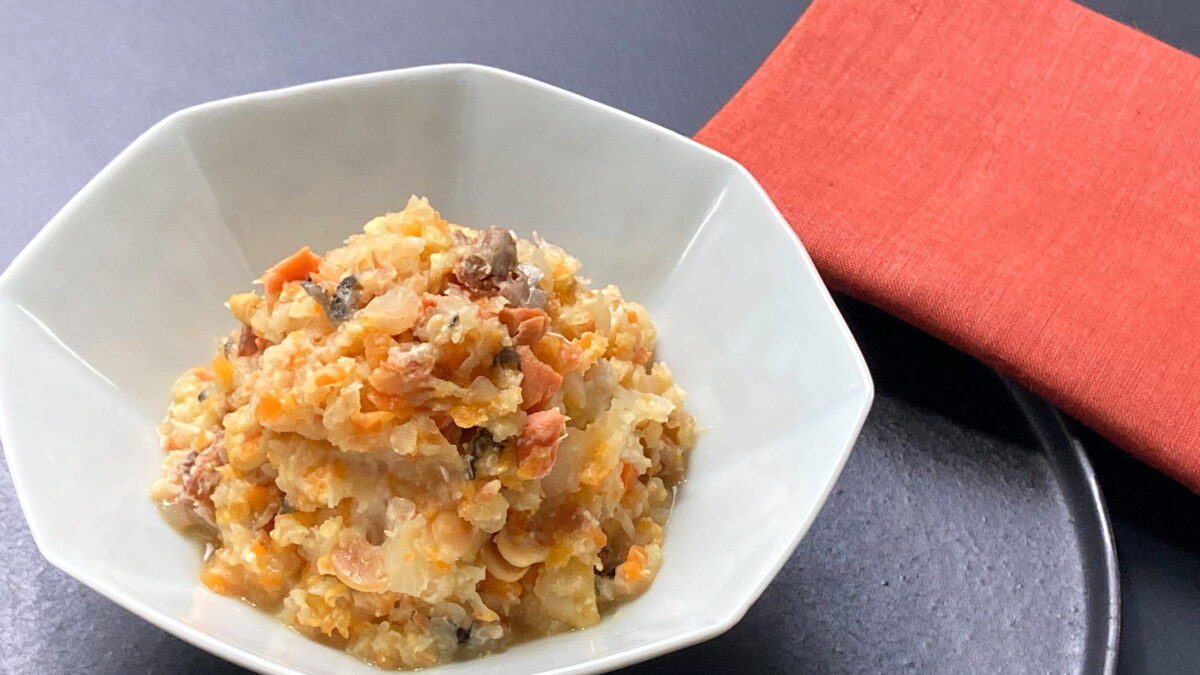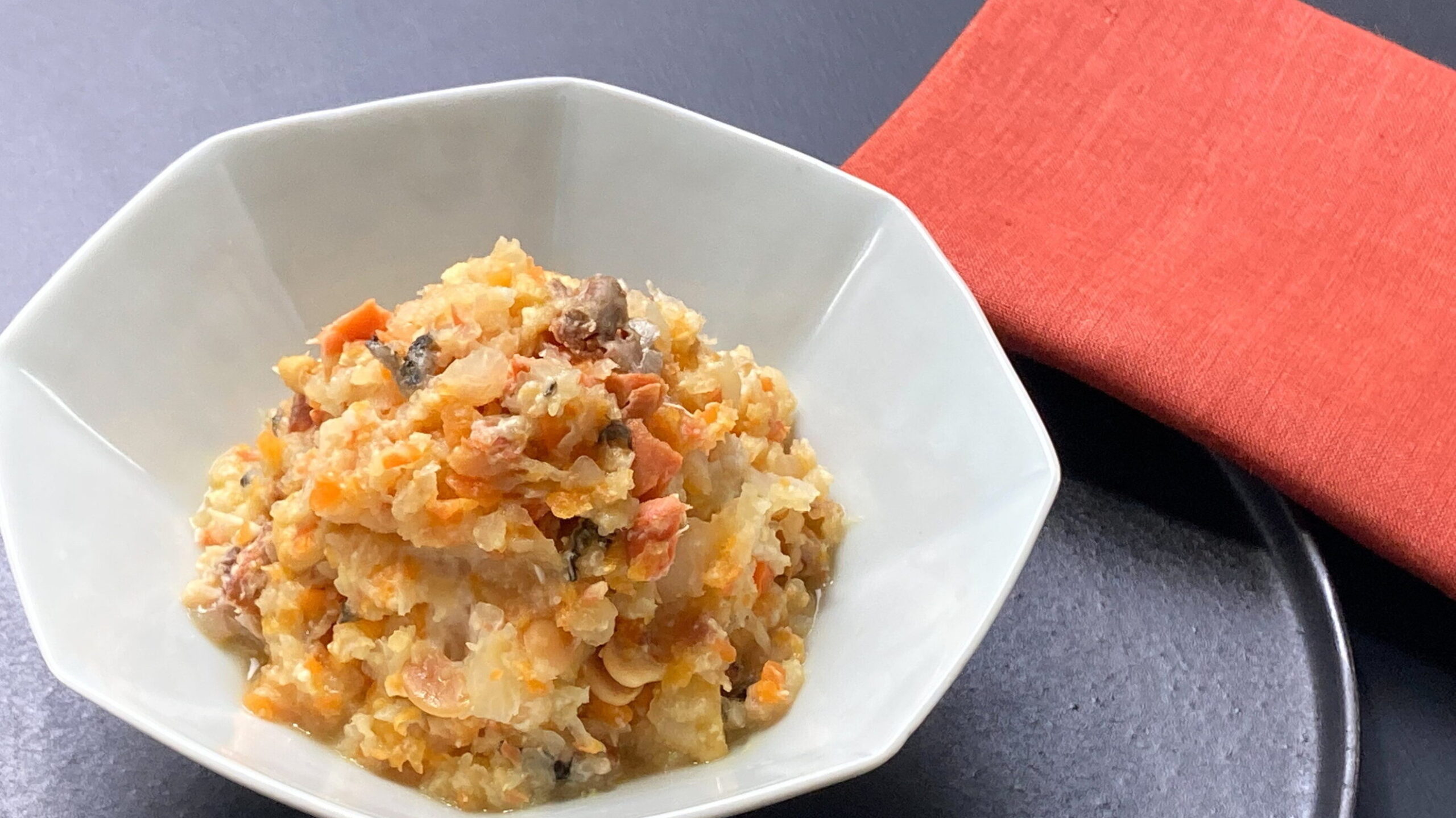
Alright, listen up, city slickers! You might think leftovers are just for the next day’s lunch, but the folks up here in Tochigi have a way of turning them into something truly special – “Shimotsukare”! It’s a dish packed with history and flavor, and let me tell you, it’s got a story to tell.
Dish Name: Shimotsukare / シモツカレ
- Region / Location: Tochigi Prefecture (throughout the prefecture).
- Primary Area of Tradition: Throughout Tochigi Prefecture.
- Main Ingredients: Daikon radish, soybeans, salted salmon head, sake kasu (sake lees), carrot, deep-fried tofu (aburaage).
How It’s Eaten / Served
The preparation of Shimotsukare involves quite a bit of simmering to allow all those flavors to meld together. The salted salmon head is carefully cleaned, parboiled to get rid of any strong fishiness, and then pressure-cooked. After that, all the ingredients are thrown into a heavy-bottomed pot and simmered for about an hour until everything is nice and tender and the flavors have married. Finally, the sake kasu is added, and the seasoning is adjusted. The saltiness of the salmon varies, so folks adjust the soy sauce and salt accordingly. Some even like to grill the salmon head before adding it to the pot. Instead of roasted soybeans, you can also use boiled ones. It’s often enjoyed with warm sekihan (red bean rice), where the slight saltiness and coolness of the Shimotsukare make a perfect contrast. Chilling the Shimotsukare also helps to reduce any strong aromas.
Cultural Background and Preservation
Shimotsukare is one of Tochigi’s most iconic local dishes, born from the ingenuity of our ancestors who knew how to make the most of what they had. It traditionally uses leftover salted salmon heads from New Year’s and the remaining roasted soybeans from Setsubun (the day before the start of spring). Back in the day, it was made specifically to be offered to Inari shrines on the old lunar calendar’s first Horse day of February (hatsuuma), and there was even a taboo against making it at other times. Hatsuuma falls during the lean period between vegetable harvests, making it tough to find fresh ingredients. While using leftovers might not seem like the ideal offering for a deity, it’s thought that by making it a “special” dish only for this occasion, it was elevated to a worthy offering for the Inari shrines.
The ingredients can vary depending on the region. In the central part of Tochigi and the lower Kinugawa River area of Ibaraki, the basic ingredients are daikon radish, soybeans, salted salmon head, sake kasu, carrot, and deep-fried tofu. However, in eastern Saitama, northern Chiba, southern Aizu in Fukushima, and the Tajima region, it’s made with just daikon and soybeans. You’ll also find combinations like daikon, soybeans, and salted salmon head, or even daikon, soybeans, salted salmon head, and sake kasu. Sake kasu likely became a common ingredient around the mid-Edo period when sake breweries became more widespread and sake lees were readily available.
While traditionally made the day before the first Horse day of February and offered and eaten on that day, nowadays, it’s made in households throughout the winter. There’s even a saying that “eating the Shimotsukare from seven different households will prevent illness for a year,” highlighting its nutritional value. Packed with the diastase in daikon, the protein in soybeans, the calcium in salmon heads, and the sugars in sake kasu, it’s a healthy and comforting accompaniment to everyday meals.
You can now find Shimotsukare being sold at restaurants, roadside stations, and supermarkets throughout Tochigi. It’s celebrated as a key part of the prefecture’s local cuisine with numerous events. Furthermore, citizen groups in Utsunomiya City are working to preserve and pass down traditional dishes like Shimotsukare to the younger generation through cooking classes for children.
Additional information:
- Setsubun (節分): The day before the start of spring in the old lunar calendar. It’s a time for rituals to drive away evil spirits and welcome good fortune, often involving throwing roasted soybeans.
- Hatsuuma (初午): The first Horse day of February in the old lunar calendar. It’s traditionally associated with Inari shrines, the shrines dedicated to the fox deity.
- Sake kasu (酒粕): The lees or leftover sediment from sake brewing. It has a slightly sweet and yeasty flavor and is rich in nutrients.
- Sekihan (赤飯): Glutinous rice steamed with azuki beans, giving it a reddish color. It’s often eaten on celebratory occasions in Japan.
The information about regional cuisine featured on this website (Piggy's Grandma of Japan) is summarized and adapted from the Ministry of Agriculture, Forestry and Fisheries of Japan (MAFF) website, "Our Regional Cuisines"Additional commentary is provided based on the unique experiences and perspectives of the site's editors.
The copyright for the original content regarding regional cuisine belongs to the Ministry of Agriculture, Forestry and Fisheries of Japan.
The summaries and adaptations published on this site are intended for informational purposes only. Piggy's Grandma of Japan does not guarantee the accuracy or completeness of this information. For the most accurate and complete details, please refer to the original pages on the MAFF website.



